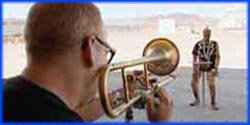


Premier Date: August 21, 2014
confirmed
To allow them to easily test various boarding methods, Adam and Jamie built an accurate replica of an airliner’s interior that included 173 real airplane seats as well as real overhead luggage compartments. Volunteers were staged at a simulated boarding gate and were given tickets with their seat assignments before each of the tests. To further simulate reality, 5% of the passengers were given instructions to behave problematically by going “upstream”, sitting in the wrong seat, boarding with small children, or wasting time by folding a coat in the aisle. Professional flight attendants were also brought in to assist with the boarding process.
Each method of boarding was judged objectively on the time it took to board all of the passengers and subjectively by the passengers’ satisfaction after each boarding experience. The satisfaction score was calculated as a sum of votes wherein “great” votes earned 1 point, “neutral” votes earned 0 points, and “terrible” votes earned -1 points.
These are the results from the boarding methods that were tested:
| Method | Description | Time | Satisfaction |
|---|---|---|---|
| Back-to-front | Business boarded first, then the zones were boarded starting in the back and moving to the front of the plane. | 24:29 | 19 |
| Random with assigned seats | Business boarded first, then all rows and all passengers were allowed to board. | 17:15 | 12 |
| WILMA | Business boarded first, followed by all window seats, then all middle seats, then all aisle seats. | 14:55 | 102 |
| WILMA with blocks | Business boarded first, followed by a combination of the back-to-front and WILMA methods; each zone was boarded with the WILMA method, starting in the back. | 15:07 | 105 |
| No assigned seats | Business boarded first, then all other passengers chose their own seats. | 14:07 | -5 |
| Reverse pyramid | Business boarded first, followed by a sophisticated cascade of zones spreading from the rear windows. | 15:10 | 113 |
The back-to-front method proved to be the slowest method tested. It was noted that the fastest method (no assigned seats) ironically had the lowest satisfaction score, but there were also methods that much faster and much more satisfying (e.g. WILMA) than the back-to-front method.
busted
The build team chose to test three different types of firearms in this for this myth. They obtained real human teeth from a dentist to make their bullets. Kari made bullets for a handgun (.357 Magnum revolver). She chose not to shape the teeth in order to retain the hard enamel coating. Tory made shotgun shells using crushed up teeth. Grant made bullets for a rifle. He ground and shaped the teeth in order to improve their aerodynamics and accuracy. Grant also wanted to test this myth using skeletal bone, so he made additional bullets from a cow femur.
To test accuracy, shots were first fired from a rig with normal ammunition, followed by the dental ammunition. The handgun with the unshaped bullets was found to be very inaccurate so no further tests were done with it. The shotgun’s accuracy was not affected by using teeth fragments as the shot. The power of the rifle destroyed the teeth bullets before they hit the target. The bone bullets in the rifle had reduced accuracy compared to lead bullets but they still hit the target.
For testing lethality, the bullets were fired at a ballistics gel target. 4 inches (10 cm) of penetration was deemed the benchmark for a lethal hit. Normal buckshot fired from the shotgun went all the way through the target (well over 4 inches). The teeth fragments only penetrated 1.5 inches (3.8 cm). Normal bullets from the rifle went clear through the target while a large bone bullet penetrated 6 inches (15 cm).
Finally, to test detectability, the bullets were fired at pig corpses which were stuffed with organs (the butcher could not sell them containing the organs). A pathologist was invited onto the show to determine if she could detect the cause of the wounds. In each case, the pathologist was able to retrieve the bullet fragments and identify them as foreign. She was even able to reconstruct the bone bullet and reveal the rifling marks on it. Because none of the bullets met all of the conditions of the premise, it was declared busted.
Previous: Episode 221: Traffic Tricks